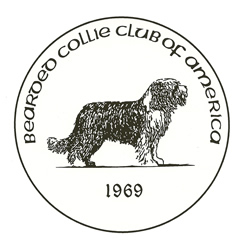(June 2021)
So you bred your lovely Beardie girl to this incredible male who is the standard personified and then some! An aristocratic head atop an elegant neck, he appears to skim over the ground, his snowy paws effortlessly devouring distance as his russet coat shimmers with golden highlights. His personality is both regal and rascal. Surely his offspring should rule the rings as he has done. After weeks of white knuckle waiting, the litter was born. They were nice. But you were looking for that handsome stud reincarnated and it didn’t happen. Maybe you just need to exercise some patience and wait for the next generation.
The Maternal Grandsire Effect has been known and practiced by some thoroughbred horse breeders for many years. Let’s use Secretariat, one of racing’s all-time greats, as an example. When his racing days were over and he was retired to stud, breeders flocked to him with their mares. But, to put it politely, none of Secretariat’s sons were in the same league as their illustrious dad. The females were better and when bred they produced sons who were frequent visitors to the winner’s circle. The qualities which made Secretariat an incredible winner skipped a generation and were passed on to the grandsons through the dams he sired.
Back in Biology 101, genetics appeared deceptively simple when viewed through the garden of Gregor Mendel’s pea plants. Don’t be fooled. It’s full of surprises, some still to be discovered. However, the Maternal Grandsire Effect has relevance in the canine world just as in the realm of thoroughbred horses.
To get down to the very basics, each cell in a dog’s body contains 39 pairs of chromosomes. The dog’s sire and dam each contribute one chromosome to each pair. Every one of those chromosomes are inhabited by a multitude of gene pairs. Now we’re talking big figures here. It’s these genes that are responsible for the traits that make a dog the individual it is. Which traits appear depend mainly on whether the genes are dominant or recessive though there may be other cases such as incomplete dominance which can make a difference. I told you it could get complicated. At first it was believed it didn’t matter which gender contributed those genes. Then, about 35 years ago researchers found male genes were responsible for small placentas with large embryos while female genes resulted in substantial placentas and sparse embryos. It appears the stud is inadvertently intent on producing healthy and hearty offspring while the female (smart girl!) controls the size of the pups.
The Maternal Grandsire Effect mainly looks at the male/daughter/grandson relationship but technically that’s only one side of the equation. Some years ago, a Chow breeder respected worldwide for the consistent quality of his dogs, revealed he relies on what he termed the ‘jump and cross’ method of breeding. In addition to the Maternal Grandsire Effect, where the male pups ‘jump’ over their dam to resemble their dam’s sire, he maintains the bitch pups produced will have ‘jumped’ over their sire and take on the traits of their sire’s dam. In this instance, grandma makes as equal a contribution to the grandkids as grandpa.
This premise could come back to bite those breeders who optimistically or naively think breeding to a superb stud will correct the faults of a bitch of questionable quality in the resulting litter.
If you’ve ever watched a youngster and thought how much he looks like his granddad, you may be looking at the result of the Maternal Grandsire Effect. If you’ve kept records and photos, you may be able to look back over the years and find if the ‘jump and cross’ theory manifests itself in your line.
As mentioned, the study of genetics is full of surprises but these aforementioned breeding methods may provide a basis or guidelines for those looking to establish a line of their liking.
— alice bixler, alice@bedlamkennels.com, Bearded Collie Club of America.




